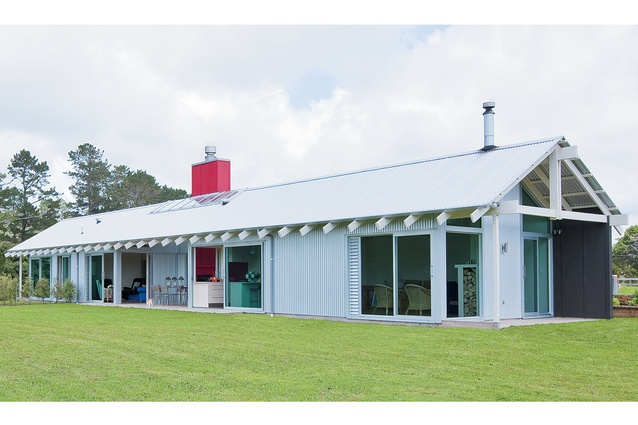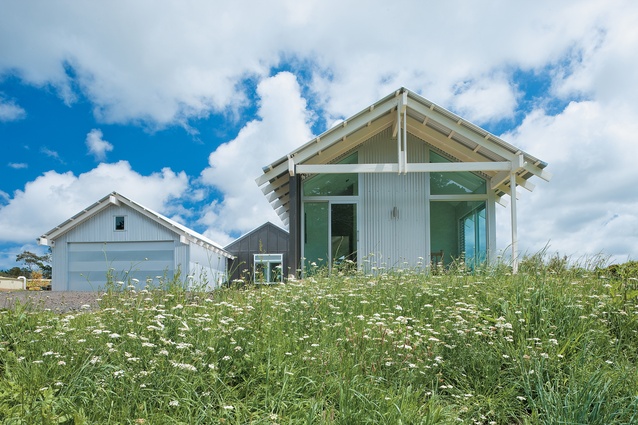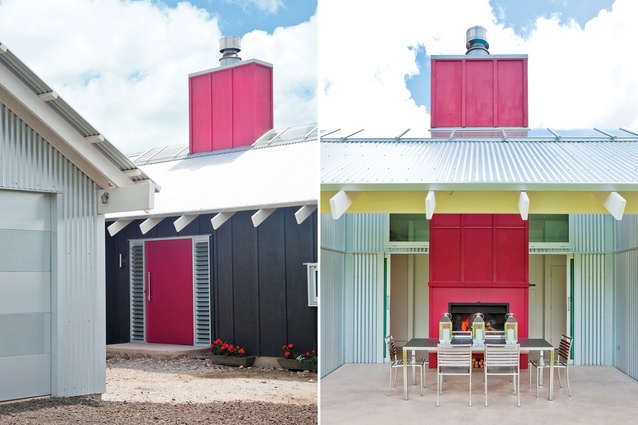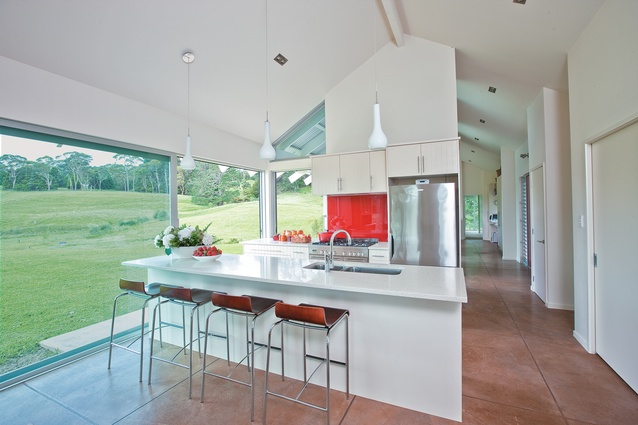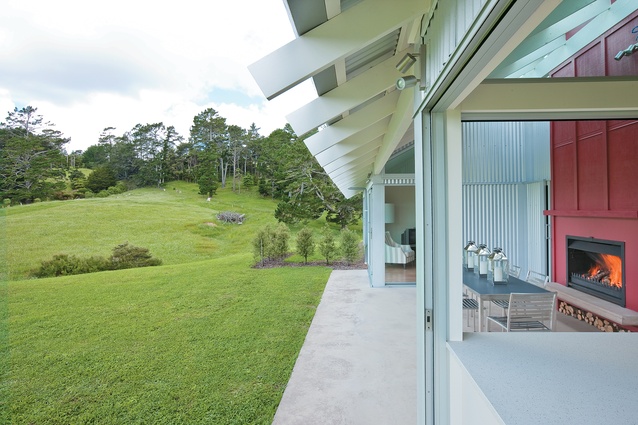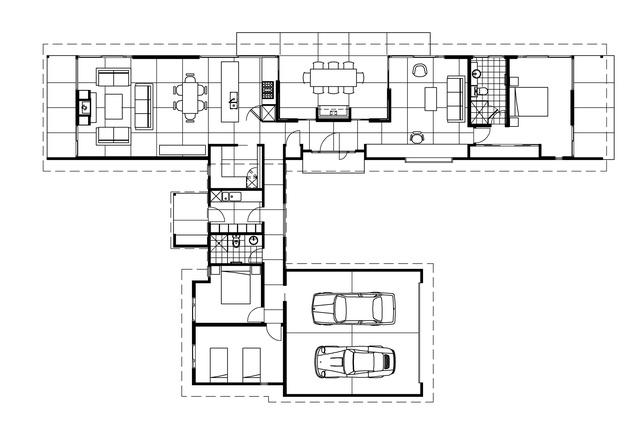Houses Revisited: A place in the sun
We look back at a home in which Paul Leuschke takes a modest budget and creates a farmhouse with room to grow.
It has become the quintessential urban dream: buy a lifestyle block within commuting distance of a city and hold down a regular job while embracing the best of country living. But for some who attempt it, the dream goes sour. “It’s not possible to work nine to five, then attend to the animals and the property when you get home,” say the couple that own this Kumeu farmhouse. They can only manage it because one of them works two days a week, while the other does shifts.
The farmhouse, designed by Auckland architect Paul Leuschke, sits at the front of a 13-acre block bought by the couple nine years ago. Initially, they lived in a two-bedroom 1920s ‘shed’ on the property, where the previous owners had brought up five children. It took time to save enough money to build a new house, but as they waited the couple dreamed about how it would look.
“We didn’t want a house that looked like a bit of Spain in Kumeu, or a Wanaka schist stone house plonked down in the middle of the fields. We wanted it to blend into the landscape and to have high ceilings and lots of light, but at the same time the budget was a huge consideration.”
Enter Leuschke, whose design for a rural house in Coatesville – also featuring a mix of corrugated iron and dark-stained plywood cladding – had been admired by the clients. He devised a master plan with two stages, the first to be built immediately, the second an extension that can be added when the couple’s three children are older.
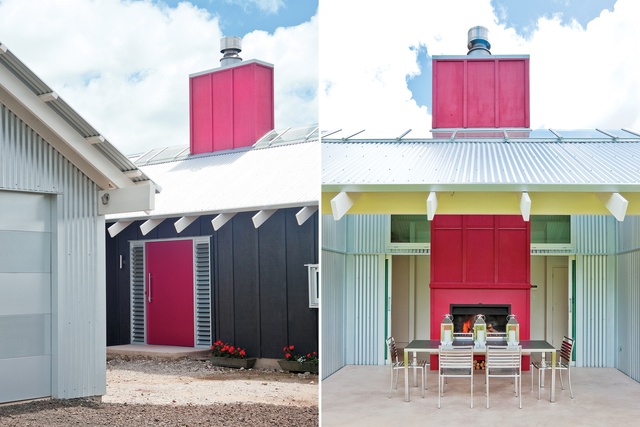
A long main section of the ‘linear’ house is complemented by two interlinked ‘extrusions’ – wings that house the children’s bathroom and bedrooms, a laundry room, and what Leuschke calls ‘a big garage for Dad’ with an attic for storage.
Did the relatively modest budget create problems in terms of the design? “Everyone has a budget,” says Leuschke, “and strangely enough the money is not the main problem. With any house, the issues are size, complexity and quality. So you can have a small, high-quality house or a large, simply constructed barn.”
A factor in keeping costs down was the decision to have a continuous stretch of roofing on the main section of the house, made from Zincalume coated steel. “Costs arise when a builder has to stop one task and start another,” explains Leuschke. “So it was cheaper to have one long roof that could go straight on.”
As well as cost efficiency, Leuschke’s concern was to ensure that the house was in keeping with its rural surroundings (to achieve that, Zincalume corrugated steel is also used for much of the cladding), as well as being positioned to take advantage of the sun. “The sun is high in summer, so the house is protected by the roof overhangs,” says Leuschke. “But in winter, when the sun is low, there’s plenty of glass so it can still penetrate deeply into the interior.”
Leuschke’s search for the sun is intrinsic to his architectural style. “I can’t understand those villas where they build extensions that face south instead of changing the direction of the living space. I love the sun. We get up in the morning and face it. Plants turn to it. And it’s free.”
Like much of the farmhouse, the master bedroom at one end of the main block has floor-to-ceiling windows, looking out over a small stream and up to the gum trees that mark the boundary of the property. There’s also a small terrace that Leuschke defines as a “quiet space, where the parents can take a breather away from the kids”.
A long corridor leads to a bathroom and a family room, followed by an open-plan kitchen and sitting room. Rather than budgeting for a fourth bedroom, the owners chose to include a scullery, with room for food preparation and dishwashing. Lining the shelves are jars of preserves made from produce picked at local orchards or from the fruit trees on the property. A flock of chickens provides fresh eggs and the couple also keep Appleyard ducks, and sheep and cattle.
Many of the smaller blocks of land around Kumeu were allocated by the state to returning soldiers after the two world wars. However, the owners say that this one was sliced off a farm as a marriage gift to a daughter in the early 1950s. For them, knowing the land’s history adds to the charm of what they’ve built.
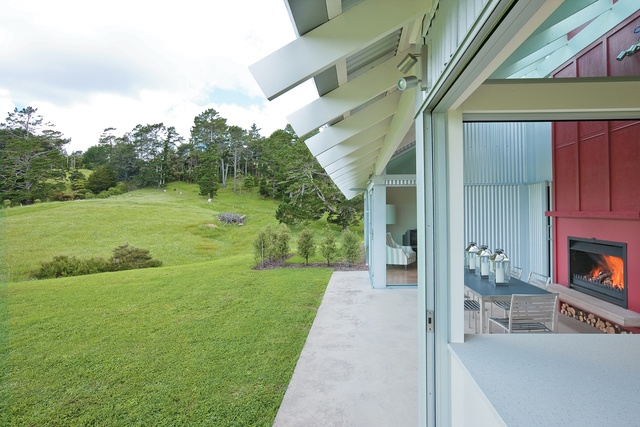
Hardwearing polished concrete floors are throughout the house and pale colours have also been used on the walls and woodwork. In the kitchen, hardwearing Arborform gives a tongue and groove look to the cabinetry, while the red glass splash back lends a touch of colour.
From the kitchen, glass doors lead to an al fresco dining area. The corrugated iron roof overhead means the terrace is sheltered from both sun and rain, while an outside fireplace provides warmth in winter. Its mantelpiece and chimney are finished in roughcast red-painted concrete, adding to the house’s classic country look.
A second wood-burning fireplace is placed at the far wall of the sitting room, with storage space for logs cleverly incorporated into the mantelpiece. In this room, the ceiling, lit by spotlights, soars to a height of 4.8 metres and sparse furnishings add to the sense of space. Despite the large expanse of glass, the full-height windows are uncurtained: “This is the country,” explains Leuschke, “there’s no need to hide”. Equally unusual is the fact that there is no television dominating the room. The only set in the house is kept in the family room, but is principally used for viewing DVDs.
Anyway, both children and adults prefer to be outside. Grain must be scattered for the ducks, rabbits digging holes in the horse’s paddock must be found and shot, and runaway basil in the raised vegetable beds is begging to be turned into pesto. The owners’ aim in buying this block of land was to give their young family “the childhood we grew up with. We wanted them to know where eggs come from”. The bonus is that the children can roam free – just like the chickens.
This article first appeared in Houses magazine


